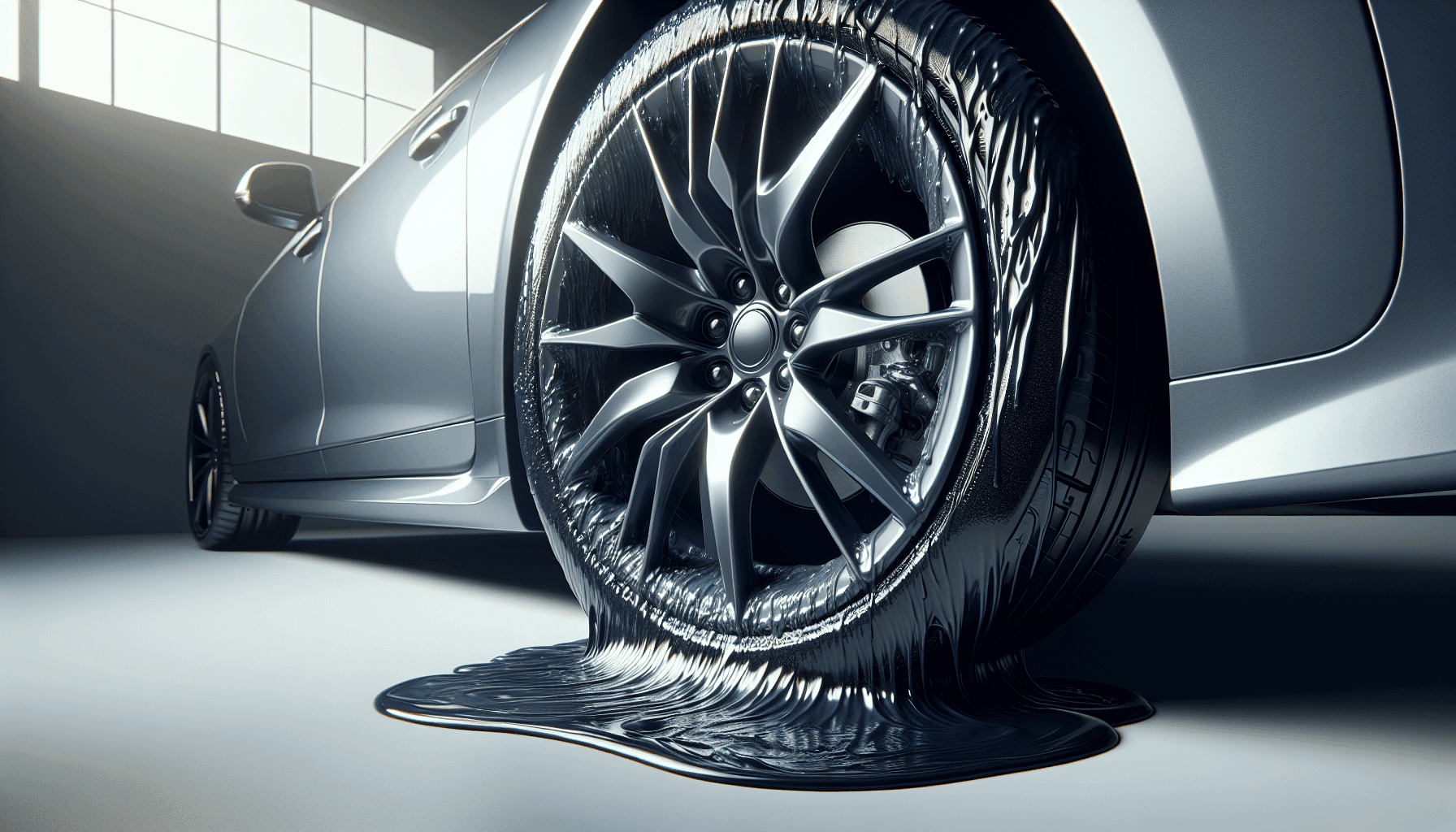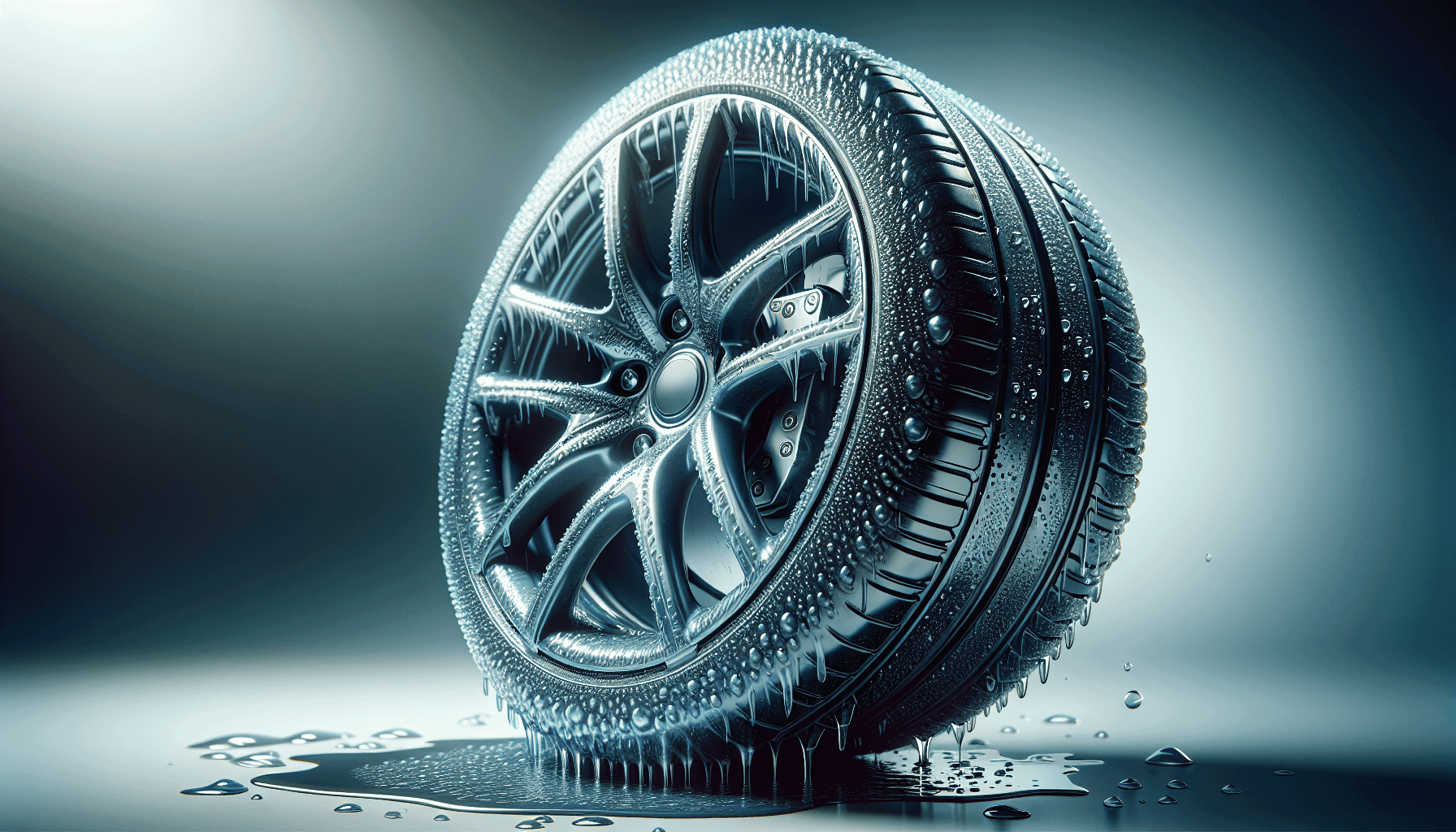Do you ever find yourself wondering if using tyre gel could inadvertently cause stains on your wheels or other car parts? If you’re navigating the world of car care, maintaining that pristine look is likely very important to you. With so many car care products available, choosing the right one can sometimes feel like a daunting task. Let’s uncover the mysteries of tyre gels together, and let you know what precautions you can take to make sure your ride keeps shining without unwanted marks.

Understanding Tyre Gels
Before we address whether tyre gels can stain your wheels or other parts of your car, it’s essential to grasp what tyre gels are and their primary purpose. Tyre gels are designed to maintain and enhance the appearance of your car’s tyres. They typically contain compounds that provide a rich, glossy finish, showcasing the tyres’ natural beauty while also protecting them against environmental factors such as UV rays and road grime.
Composition and Functionality
Tyre gels are made up of various ingredients, including silicone oils, thickening agents, and other additives formulated to adhere well to rubber surfaces. These components work together to not only improve the visual aesthetics of your tyres but also to create a protective layer that repels dirt and water. The silicone content, in particular, is responsible for that gleaming look you admire after applying the gel.
Application Process
The process of applying tyre gel is relatively straightforward, which is part of its appeal. Typically, you would use an applicator pad to evenly distribute the gel across the tyre surface. However, it’s vital to be cautious and avoid applying too much product to prevent excessive runoff onto other parts of the vehicle.
Can Tyre Gel Stain Your Wheels?
Now, straight to the heart of the matter: can tyre gel actually stain your wheels? The concern mainly surrounds the potential of the silicone oils and other chemicals in the gel seeping onto wheel surfaces, especially in cases of over-application or incorrect application.
Types of Wheel Finishes and Compatibility
Understanding the type of finish on your wheels can help determine if they’re susceptible to staining. There are various wheel finishes, such as polished aluminum, painted, powder-coated, and chrome. Some finishes are more resistant to stains than others. For instance:
| Wheel Finish | Stain Resistance | Notes |
|---|---|---|
| Polished Aluminum | Moderate | Requires regular upkeep; prone to marking |
| Painted | High | Most resistant to staining from gels |
| Powder-Coated | High | Durable and resistant to chemical damage |
| Chrome | Moderate | Can show water spots and marks |
The inherent properties of some finishes make them more vulnerable. As such, it’s crucial to ensure proper application to avoid any potential staining or damage.
Advised Practices for Safe Use
To mitigate the risk of tyre gel staining your wheels:
- Control the Quantity: Use a moderate amount of gel to minimize runoff.
- Check for Compatibility: Ensure the tyre gel is safe for your wheel type by checking manufacturer guidelines.
- Apply Carefully: Apply evenly and keep the gel on the tyre’s sidewall.
- Clean Up Excess: Always wipe away any excess gel that may have reached your wheels.
Effects on Other Car Parts
The appeal of glossy tyres can sometimes overshadow consideration for nearby car components. While the designs of cars may vary, some areas are generally prone to splash or drips during application, which could raise concerns about stains.
Typical Vulnerable Areas
Areas most at risk of accidental contact with tyre gel include:
- Wheel Wells: These are near the tyre application zone and can come in contact with dripping gel.
- Trim and Mouldings: These parts may sit close enough to tyres where excess gel could reach them.
- Brake Components: Exposure to tyre gels is highly unlikely but could occur in cases of severe over-application.
Preventive Measures
To protect these parts from staining or damage:
- Use a Protective Cover: Consider using a wheel guard or covering areas that might be exposed during application.
- Immediate Clean-Up: If any gel comes into contact with unintended surfaces, wipe it away promptly with a microfibre cloth.
- Use Gel Wisely: Don’t use more than necessary; a small amount works wonders.
The Role of Quality in Tyre Gels
Not all tyre gels are created equal. The quality of the product significantly influences whether it will stain your vehicle.
Brands to Consider
Reputable brands known for their high-quality car care products often provide tyre gels that are safe, effective, and less likely to damage car parts. Brands such as Gtechniq, Chemical Guys, Meguiar’s, Autoglym, and others have developed reliable formulas that prioritize both the aesthetic quality and protective features.
Evaluating Ingredients
When selecting a tyre gel, it’s worth paying attention to the list of ingredients. High-quality gels will have a balanced formulation that ensures durability and car surface safety. Check for non-silicone based formulas if silicone is a concern, as these options may deliver a matte finish without risking marks on your car.

Benefits of Using Tyre Gel
Aside from concerns over staining, tyre gels offer significant advantages that make them a worthwhile addition to your car care routine.
Enhanced Appearance
Most notably, tyre gels provide a sleek, clean look that enhances the overall aesthetic of your vehicle. A well-applied gel can transform the old and dull appearance of aged tyres into a fresh, shiny look reminiscent of showroom condition.
UV Protection and Longevity
The protective benefits extend beyond cosmetics. The UV shielding properties in tyre gels help prevent cracking and fading, ensuring your tyres maintain their integrity and appearance for longer periods.
Common Misconceptions About Tyre Gels
Understanding tyre gels also means debunking a few myths that could impact your usage decisions.
Myth: Tyre Gels Are All the Same
Despite similar marketing claims, tyre gels can differ significantly in their formulations and effects. Exploring and sticking to trusted brands ensures you get the best results.
Myth: Tyre Gels Can Damage Tyres
Properly formulated gels designed for tyre applications should not cause harm to tyres. Issues generally arise from incorrect application or use of substandard products.
FAQs on Tyre Gels and Staining
Addressing common questions can further enhance your understanding and confidence in using tyre gels.
Can a Gel’s Stain Be Removed from My Wheels?
Yes, if staining has occurred, it can typically be reversed with the right approach. Using a non-abrasive wheel cleaner and a microfibre cloth or soft brush often does the trick.
Should Tyre Gel Be Avoided on Certain Wheel Types?
Always refer to product specifications and recommendations. If your wheels are known to be extremely sensitive, test any new application on a small area first.
How Often Should I Reapply Tyre Gel?
Reapplications depend on driving conditions, exposure to elements, and the particular gel used. Typically, every two weeks or after washing your car is sufficient for maintaining a consistent shine.
Conclusion
Exploring the world of tyre gels is an exciting journey towards better car care. By learning to apply these products correctly and choosing high-quality formulas, you can enjoy all of their benefits—like that impressive shine and added protection—without worrying about unwanted stains. As you enhance your vehicle’s aesthetics with confidence, remember that maintaining cleanliness and order during application can safeguard the pristine look of all your car parts. Always prioritize informed choices, and cherish the smooth, enhanced appearance of both your wheels and tyres. You can check out specific products on our site in the Reviews section. Look at the links at the top of the page such as Product Reviews, Product Comparisons etc.
